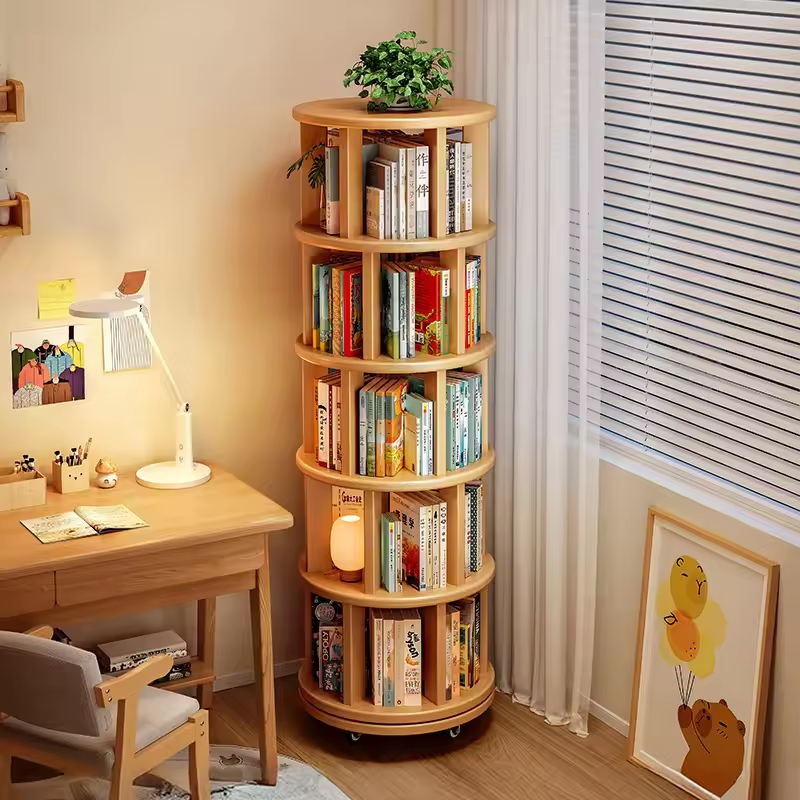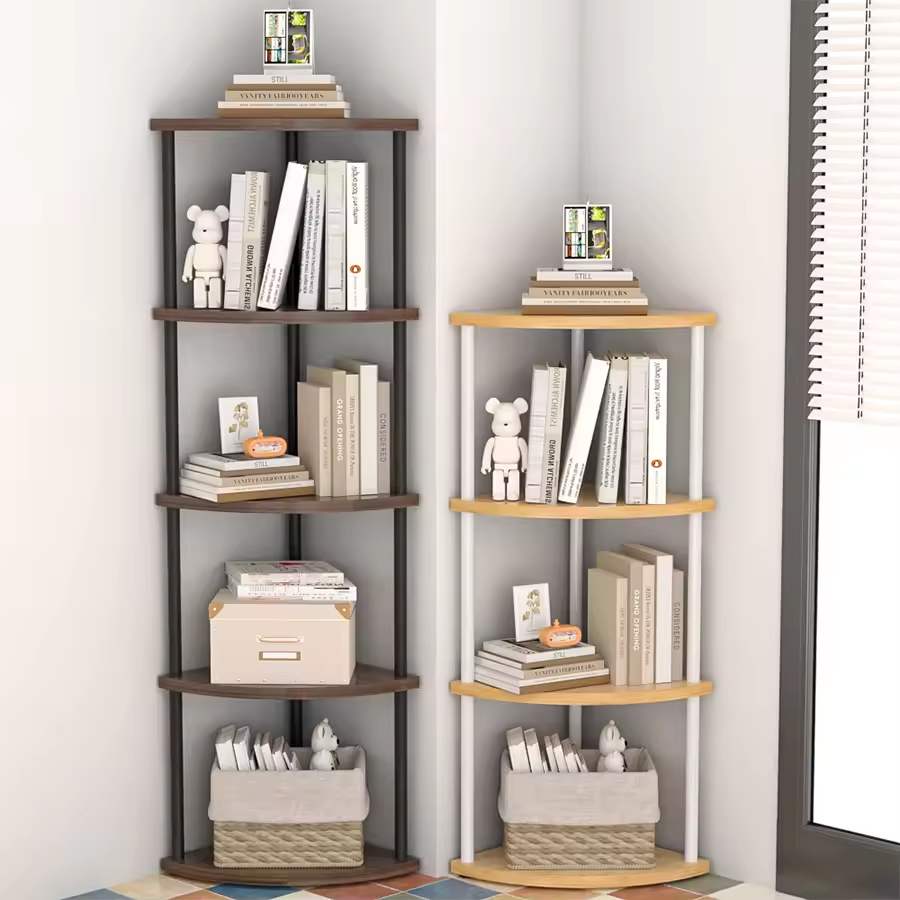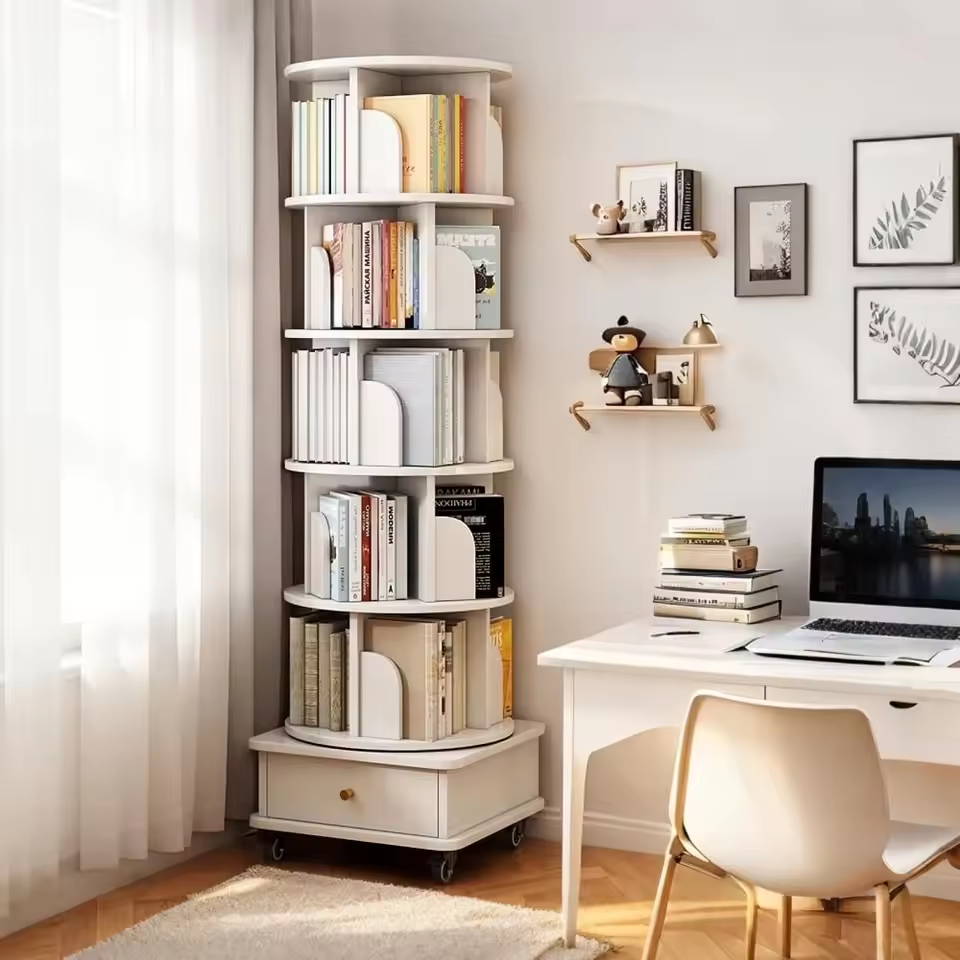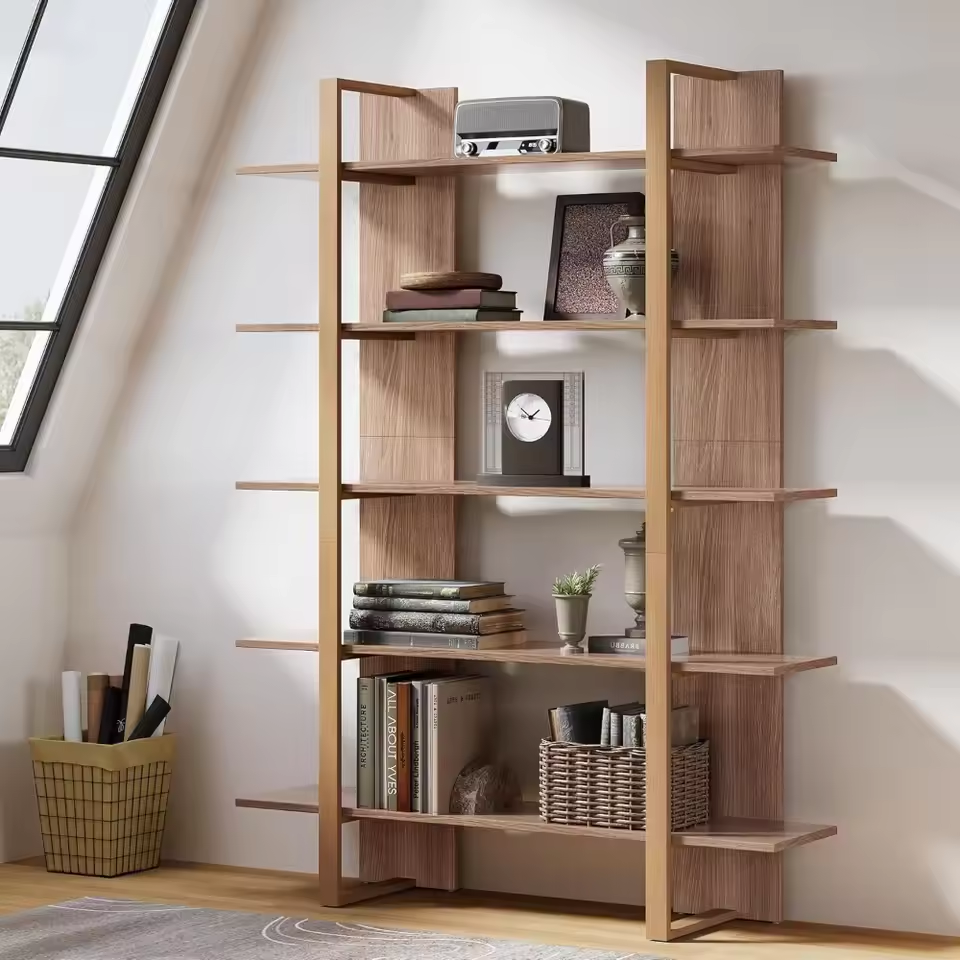Introduction: The Multi-Functional Role of a Small Bookshelf
A small bookshelf transcends its name—it’s not merely for books but a versatile organizational tool that blends function and aesthetics. In compact apartments or minimalist homes, it transforms empty corners into curated displays, housing everything from novels and decor to plants and art. Its compact size ensures it fits seamlessly in tight spaces like bedrooms, entryways, or even kitchens, while its design versatility adapts to any style, from modern sleekness to rustic charm. Beyond storage, it acts as a visual anchor, balancing proportions in rooms and adding depth through layered displays. Whether you prioritize practicality, decor, or both, a well-chosen small bookshelf becomes an indispensable piece that maximizes utility without sacrificing charm. This guide explores how to select, style, and integrate this multi-functional staple into your living space.
Space-Saving Solutions with Compact Designs
Maximizing space with a small bookshelf requires clever design thinking. Compact models leverage innovative layouts to store books, decor, and essentials without dominating a room. Here are top strategies for optimizing your space:
1. Wall-Mounted Shelves
Floating shelves free up floor space entirely, ideal for tiny apartments or cluttered rooms. Opt for L-shaped or angled brackets to add visual interest—e.g., a minimalist oak shelf above a sofa or a narrow metal unit in a hallway. Brands like IKEA’s Björkling series offer budget-friendly options with adjustable depths.
2. Corner Bookshelves
A corner small bookshelf turns unused corners into functional storage. Staggered shelves accommodate books of varying sizes, while hexagonal or triangular designs blend style with utility.
3. Stackable Modular Units
Modular systems let you customize configurations. Stackable cubes or vertically tiered units (like MUJI’s minimalist designs) adapt to evolving needs. Pair a low-profile shelf with a taller one to create dynamic displays in home offices or nurseries.
4. Desk Integration
Combine functionality with aesthetics by choosing a desk-and-shelf combo. Units like IKEA’s BILLY bookcase paired with a compact desk save space in home offices, offering storage for papers and decor.
5. Under-Stair Solutions
Custom or pre-made units fit under staircases, transforming dead zones into storage hubs. A narrow small bookshelf with three shelves can hold cookbooks in a kitchen or DVDs in a living room.
Pro Tips:
- Depth Matters: Opt for shelves 8–12 inches deep to avoid overcrowding.
- Lightweight Materials: Glass or metal frames add openness to small rooms.
- Color Coordination: Match the small bookshelf to walls or furniture for a cohesive look.
These designs prove that even in tight spaces, a small bookshelf can be both a storage hero and a design asset.
Stylish Options for Every Aesthetic: Modern to Rustic
A small bookshelf can adapt to any design style, from sleek minimalism to cozy rustic charm. Here’s how to choose one that mirrors your home’s aesthetic:
1. Modern Minimalism
Clean lines and neutral tones dominate this style. Opt for a small bookshelf with a monochromatic palette (white, black, or gray) and minimalist hardware. Floating shelves with glass or matte finishes create a lightweight look, while a low-profile unit paired with abstract art adds contemporary flair.
2. Industrial Chic
Exposed metal and raw textures define industrial designs. A small bookshelf with iron frames or unfinished wood complements this aesthetic. For example, a unit with open slatted shelves and black metal legs works well in lofts or urban apartments. Add Edison bulb lighting or leather accessories to enhance the urban vibe.
3. Rustic Warmth
A wooden bookshelf with distressed finishes or reclaimed wood suits farmhouse or cabin interiors. Look for chunky, weathered frames or shelves with visible grain, like West Elm’s Alderwood series. Pair with woven baskets, dried flowers, and vintage books for a cozy feel.
4. Mid-Century Modern
Vintage-inspired designs feature tapered legs and warm wood tones. A small bookshelf with teak or walnut finishes and curved edges adds mid-century charm. Balance it with geometric decor or retro lamps for a cohesive look.
5. Coastal Simplicity
Light woods, pale colors, and natural materials define coastal aesthetics. A small bookshelf with whitewashed pine or bamboo pairs well with seashell decor and nautical-themed books. For a boho twist, add macramé plant hangers or woven baskets.
Pro Tips:
- Scale Matters: Match the shelf’s proportions to room size.
- Mix Textures: Combine a wooden bookshelf with metallic accents for depth.
With these options, a small bookshelf becomes a focal point that harmonizes with your style while serving practical needs.
Material Matters: Choosing the Perfect Small Bookshelf
Selecting the right material for your small bookshelf ensures it aligns with your aesthetic, durability needs, and maintenance preferences. Here’s a breakdown of top materials and their pros/cons:
1. Wooden Bookshelves
- Warmth and Versatility: A wooden bookshelf adds natural charm and suits rustic, modern, or farmhouse styles. Reclaimed wood options enhance character with knots and grain patterns.
- Durability: Solid wood resists warping but requires care to avoid moisture damage. Avoid placing near windows or heaters to prevent cracking.
- Maintenance: Dust regularly and use wood polish annually. Opt for sealed finishes if you live in humid climates.
2. Metal Shelves
- Modern Edge: Steel, iron, or chrome frames offer industrial or minimalist aesthetics. Open designs add lightness to small rooms.
- Durability: Resists scratches but may rust if exposed to moisture. Look for powder-coated finishes for longevity.
- Maintenance: Wipe with a soft cloth and avoid abrasive cleaners.
3. Glass Shelves
- Sleek and Space-Enhancing: Transparent glass shelves create an airy feel, ideal for compact spaces. Units like MUJI’s Acrylic Storage blend seamlessly into modern decor.
- Maintenance: Clean with glass-specific cleaners and microfiber cloths.
4. Composite Materials
- Cost-Effective Options: MDF (medium-density fiberboard) or particleboard coated in veneer offers affordability. IKEA’s BILLY series uses this material with sleek finishes.
- Maintenance: Wipe with damp cloth only—avoid soaking to prevent swelling.
5. Mixed-Material Designs
Combine textures for visual interest:
- Wood + Metal: A wooden bookshelf with metal legs merges warmth with industrial flair.
- Glass + Wood: A floating shelf with a glass top and wooden frame balances transparency and stability.
Key Considerations:
- Style: Match material to your decor.
- Space: Glass and metal suit small rooms; wood adds depth to minimalist settings.
- Maintenance: Prioritize low-maintenance options if you dislike upkeep.
By understanding material traits, you’ll choose a small bookshelf that harmonizes with your lifestyle and evolves with your home’s aesthetic.
Creative Placement Ideas for Tight Corners and Narrow Spaces
Even the smallest rooms can accommodate a small bookshelf with inventive placement strategies. Here’s how to leverage overlooked areas for both function and style:
1. Corner Nooks
A corner small bookshelf transforms dead zones into functional displays. For L-shaped rooms, position a hexagonal or triangular unit to hold books, plants, or art. Alternatively, stack two square shelves at an angle to create a diagonal focal point.
2. Under Stairs
Custom or pre-made units fit snugly under staircases. A narrow wooden bookshelf with three tiers stores cookbooks in a kitchen or DVDs in a living room. Add LED strip lighting underneath for a modern glow.
3. Behind Doors
Utilize vertical space with slim, door-mounted shelves. A narrow small bookshelf (8–12 inches deep) can store cookware in a pantry or toiletries in a bathroom. Opt for floating brackets to avoid bulky hardware.
4. Bedroom Anchors
Place a small bookshelf beside a bed to display a lamp, alarm clock, and a curated book stack. Choose a unit with open sides to avoid crowding.
5. Hallway Storage
Line a narrow hallway with wall-mounted shelves. A series of floating units creates a gallery-like effect for photos, vases, or travel souvenirs.
Pro Tips:
- Scale Matters: Match shelf size to the space—avoid oversized units in tiny corners.
- Layer Decor: Mix books with small plants, art, or textiles to add visual interest.
- Lighting: Use under-shelf LED strips to highlight displays in dim areas.
These placements prove that a small bookshelf isn’t just for book-filled rooms—it’s a design solution for every overlooked nook.
How to Pick the Best Small Bookshelf for Your Needs
Choosing the right small bookshelf requires balancing aesthetics, functionality, and practicality. Follow these steps to find one that suits your lifestyle:
1. Define Your Purpose
- Storage-First: Prioritize sturdy, deep shelves for heavy books or items.
- Display-Driven: Opt for open designs or glass shelves to showcase decor.
- Multi-Purpose: Look for combos like desk-and-shelf sets for home offices.
2. Measure Your Space
- Width/Depth: Ensure it fits gaps between furniture. A 24-inch-wide shelf suits narrow hallways.
- Height: Avoid overloading ceilings—most rooms accommodate shelves up to 60 inches tall.
- Doorways: Measure door frames if moving the unit vertically.
3. Match Material to Lifestyle
- Wood: Durable and warm but requires humidity control.
- Metal: Low maintenance but may dent—ideal for urban lofts.
- Glass: Lightweight but avoid if you dislike fingerprints.
4. Align with Your Style
- Modern: Sleek lines, monochromatic colors.
- Rustic: Distressed finishes or reclaimed wood.
- Industrial: Exposed metal or raw textures.
5. Check Build Quality
- Sturdiness: Lift the unit—lightweight may mean flimsiness.
- Assembly: Pre-assembled options save time; modular designs allow customization.
- Safety: Ensure brackets or legs are securely attached, especially for tall units.
6. Budget Considerations
- Affordable Options: IKEA (¥200–¥500) or Target’s Threshold line.
- Mid-Range: MUJI or CB2 for sleek designs (¥500–¥1,200).
- Premium Picks: Restoration Hardware or Room & Board for bespoke finishes.
Final Tip: Visit stores to test weight distribution and check finishes in person. A well-chosen small bookshelf becomes an enduring solution that grows with your needs.
Combining Functionality: Shelves with Hidden Storage
A small bookshelf with hidden storage elevates utility without sacrificing aesthetics, making it ideal for clutter-prone spaces. These designs discreetly tuck away essentials while maintaining a streamlined look:
1. Drawered Shelves
Add pull-out drawers beneath open shelves to store remote controls, office supplies, or small decor. IKEA’s BILLY series offers drawer add-ons that blend seamlessly with the unit’s style. A wooden bookshelf with dovetailed drawers adds warmth to bedrooms or living rooms.
2. Lift-Top Designs
Flip-up shelves hide storage compartments beneath. A minimalist unit with a hinged top can stash books, toys, or seasonal decor in kitchens or playrooms.
3. Modular Units with Secret Compartments
Stackable cubes or slide-out trays maximize hidden storage. Brands like IKEA’s Kallax allow custom configurations—pair open shelves with a bottom drawer for a tidy home office.
4. Under-Shelf Baskets
Attach woven or metal baskets beneath shelves to store magazines, cables, or blankets. This works well in wooden bookshelves with rustic accents, adding texture while keeping items organized.
5. Wall Units with Concealed Cabinets
Floating shelves with integrated cabinets hide bulky items like board games or seasonal decor. For example, a modern unit with a sliding door fits neatly above a sofa, offering storage without visual clutter.
Pro Tips:
- Scale Balance: Ensure drawers or compartments don’t overwhelm the shelf’s proportions.
- Material Consistency: Match finishes—for instance, a wooden bookshelf with wooden drawers avoids jarring contrasts.
- Function Over Form: Prioritize accessibility—place frequently used items in easily reached drawers.
These innovations prove that a small bookshelf can be both a stylish statement and a clutter-solver, turning overlooked spaces into functional gems.
Conclusion: Elevate Your Space with a Thoughtful Small Bookshelf
A small bookshelf transforms cramped corners into curated spaces, blending functionality and aesthetics effortlessly. Whether you prioritize a wooden bookshelf’s warmth, a metal unit’s modern edge, or hidden storage solutions, the right choice enhances both style and practicality. By measuring spaces wisely, balancing materials with decor, and embracing creative placements—from under stairs to doorways—you turn limitations into opportunities. These compact designs prove that even the smallest units can anchor rooms, display cherished items, and adapt to evolving needs. Invest in a small bookshelf that mirrors your lifestyle, and watch it become a timeless staple that organizes, inspires, and elevates your living space.
